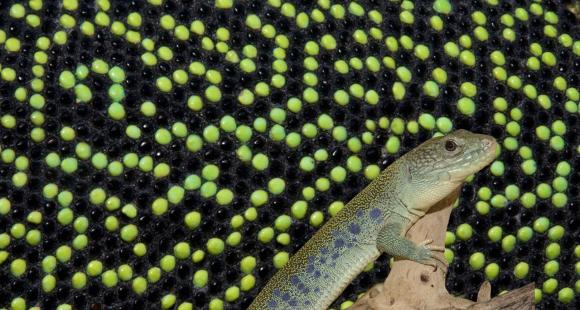
Source https://phys.org/news/2017-04-lizard-biology-mathematics.html
In an article from phys.org, researchers have used simulation to show that skin color in animals arise from microscopic interactions between neighboring cells. In particular, in the brown juvenile ocellated lizard (Timon lepidus), the skin is made up of scales that change color as the lizard ages. Each scale is either green or black as seen in the image above. Researchers followed the coloring of individual lizards over the course of 4 years and found that scales changed between black and green over the course of the lizard's life. More striking, is that the skin seems to form a cellular automoton in which the color of individual scales are influenced by color of neighboring cells. This is the first known case of a 2D cellular automoton within a living organism.
The concept of a cellular automoton (CA) as a computing system was invented in 1948 by the mathematician John von Neumann. CAs are studied by complexity scientists because in them, simple rules can lead to emergent patterns. The key point in the article is that the researchers demonstrated that a Cellular Automaton as a computational system is not just an abstract concept but also corresponds to a natural process generated by biological evolution.
Read more at: https://phys.org/news/2017-04-lizard-biology-mathematics.html#jCp
Read more at: https://phys.org/news/2017-04-lizard-biology-mathematics.html#jCp

